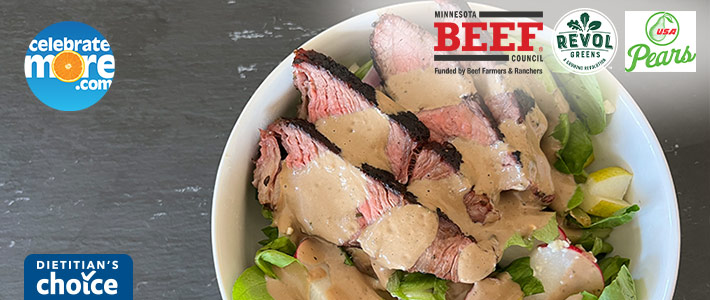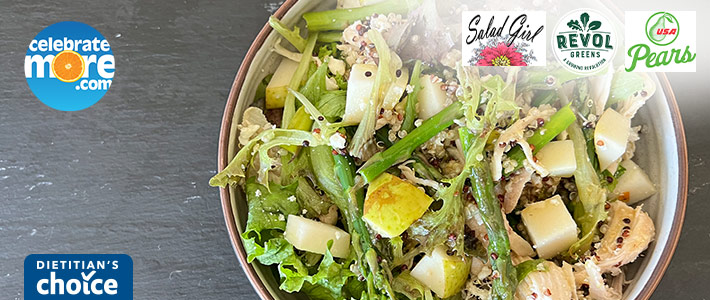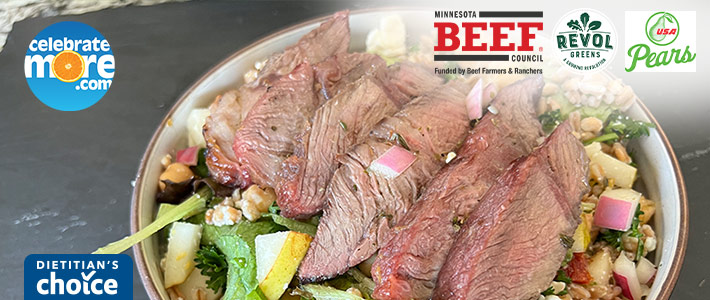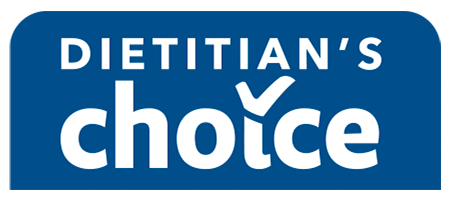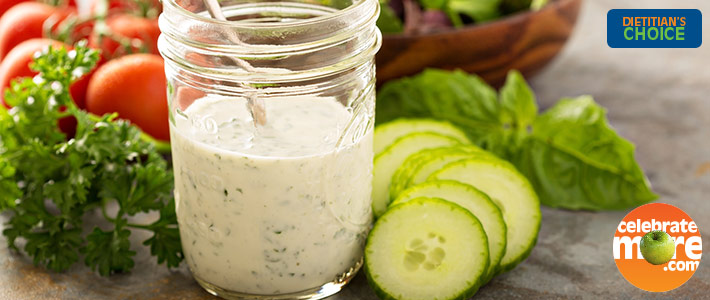
Cottage Cheese Egg Muffins
Add some extra protein to your family’s breakfast with these tasty and nutritious Cottage Cheese Egg Muffins. Our dietitians are adding new recipes all the time, so check out our Dietitians Choice Recipes page for all their latest recipes!
Shop from the comfort of your home! You can shop online at any of our proud family of stores for these recipe ingredients as well as the rest of your grocery list! We offer curbside pick up at all locations and delivery in select locations as well. Don’t forget to connect your MORE Rewards account when you shop online for extra savings, digital coupons, and many other rewards too!
Shop Ingredients
Steak Salad with Creamy Balsamic Dressing
Bright Spring Salad
Pear Barley Salad
A Registered Dietitian’s Guide to Salads
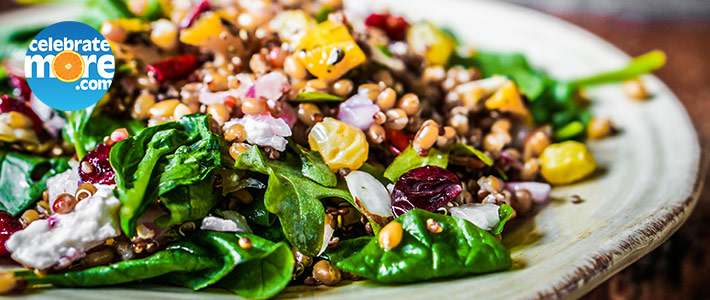
A Registered Dietitian’s Guide to Salads

I’m such a big fan of salads! And not the boring iceberg lettuce, tomatoes, and shaved carrot types of salads. I’m talking about big, heaping salads full of whole grains, proteins, vegetables, and fruits. Honestly, nothing’s off limits when it comes to salad! They say that the eyes eat first, and that’s one of the amazing things about salads. They’re fun, colorful, and often seasonal – and that creates an exciting eating experience. However, it’s not always easy to find salad recipes that are delicious, nutritious, and filling. So, I bring you a Registered Dietitian’s Guide to Salads!
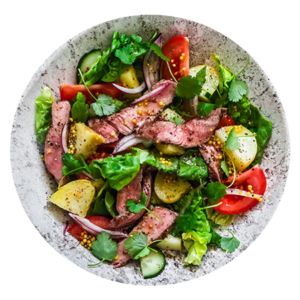 Step 1: Choose Your Protein
Step 1: Choose Your Protein
Adding protein to your salads is hugely important. Have you ever eaten a salad that consisted of only vegetables and thought to yourself, wow I’m still hungry? That’s because your salad lacked protein. Protein is a key piece of any snack or meal because it leaves you feeling full and satisfied. Not to mention the delicious flavors that proteins like beef or salmon add to salads! Here are a few of my favorite salad protein options:
- Salmon – Love those Omega-3s!
- Chicken – Skinless chicken breast or chicken tenders are SO simple to have on hand to toss in your salad.
- Beef – Look for 90% or more lean ground beef or choose lean cuts like tenderloin.
- Pork – Choose lean cuts like pork chops or tenderloin.
- Beans – My favorite meatless protein option!
RD Tip: Does a salad look delicious, but lack the protein to be filling? Don’t be afraid to add protein! Cook up chicken breasts or grill a steak to bring that protein boost.
Step 2: Choose Your Dressing
Choosing a salad dressing can be challenging, especially when you’re shopping with your health in mind. Pre-made salad dressings often contain high amounts of added sugar, saturated fat, and sodium, so always check the nutrition label. A general rule of thumb when you’re reading the nutrition label on salad dressings is to look for options that contain:
- <6g sugar
- <2.5g saturated fat
- <200mg sodium
Or simply look for our blue Dietitian’s Choice logo on the shelf tag to feel confident that you’re reaching for the better for you option!
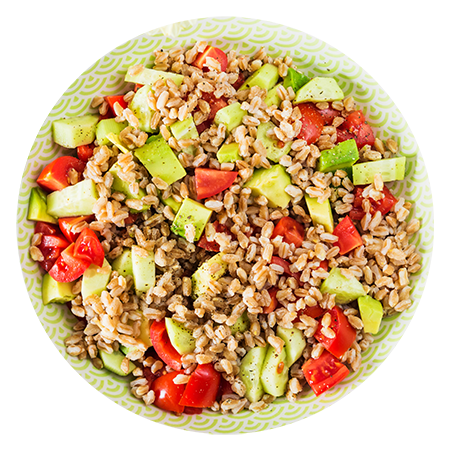 Step 3: Add Some Grains!
Step 3: Add Some Grains!
Whole grains not only add texture, but they also hold a ton of amazing salad dressing flavor. And as if that wasn’t enough reason to add whole grains to your salads, there’s benefits to your body as well! Adding whole grains like quinoa, farro, barley, and brown rice to your salad ensures that you leave the meal feeling full and satisfied. Not to mention the heart and gut benefits of increasing the fiber in your diet!
Step 4: AAALLLL Your Favorite Vegetables & Fruits
Again, nothing is off limits. Start with the fruits and vegetables that you know and love, but don’t be afraid to experiment. Try to make your plate as colorful as possible, using various produce items. Different colors are associated with different antioxidants and vitamins, so have fun eating the rainbow of colors!
—
Is your mouth watering yet? Get inspired with some of my favorite salad recipes:
- Wild Alaska Pollock Panzanella Salad
- Steak Salad with Creamy Balsamic Dressing
- Strawberry and Spinach Salad
- Bright Spring Salad
- Pear Barley Salad
Happy Eating!
Jess, Registered Dietitian
MPPD, RDN, LD
How To Eat For Your Health And The Planet’s Health

How To Eat For Your Health And The Planet’s Health

The snow is (hopefully) melting this month as we look forward to greener views. And the prospect of green grass happens to coincide with the same month we think about going green to celebrate Earth Day! As a Registered Dietitian, I share a lot about how food impacts your physical health and even mental health. But another perspective to consider is how the food we eat impacts the Earth’s health! Our planet provides the food we eat and the way we harvest that food makes a difference in the resiliency of our food systems. So, learning how to eat for your health and the planet’s health is a great way to celebrate Earth Day this month!
What’s the difference between sustainable agriculture and regenerative agriculture?
Many of us are familiar with the term sustainable and how it relates to agriculture. It’s an effort to maintain the Earth as it is, using practices that conserve resources. But what about regenerative? Our team spoke with a representative from MN350 to learn more about what it means for a farmer to utilize regenerative agriculture. Here’s what he said:
“[It] builds on organic farming with minimal soil tillage, emphasizing land stewardship by incorporating cover crops, livestock, and diverse crop rotations.”
In summary, regenerative agriculture not only maintains the health of the soil, but it improves, or regenerates, it. Which is pretty cool! If you want to add regeneratively produced food items to your cart, look for Regenerative Organic Certified, USDA Organic, or Fair Trade Certified labels.
Here’s a couple of our Dietitian Team’s favorite regeneratively produced products!
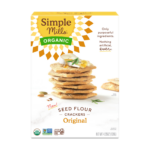 Simple Mills
Simple Mills
This brand believes that food has the power to transform people’s health and our planet’s health. And you can clearly see this belief in how they source ingredients, empower farmers to embrace regenerative techniques, and inspire other brands to do the same. I encourage you to check out their seed flour crackers – some of the sunflower used in the crackers comes from Minnesota!
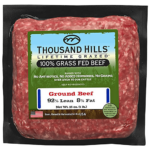 Thousand Hills Beef
Thousand Hills Beef
This beef is lifetime grazed and 100% grass fed. Thousand Hills Lifetime Grazed beef utilizes regenerative agriculture to support biological diversity, natural resources, native wildlife habitat, and soil fertility. How do they support all of these amazing results? Their cattle graze in one area before moving to another and this technique prevents overgrazing the land to manage both watershed and soil health. Grab the 92% lean ground beef option to maximize the nutrition AND sustainability of your beef.
—
Shopping regenerative and sustainable products like these is a great way to support our local producers of fruits, vegetables, meat, dairy, and more. Find your favorite products and enjoy them all year round to do your part in improving our planet’s health!
Happy Eating!
Jess, Registered Dietitian
MPPD, RDN, LD
This blog was written in partnership with MN350.
March Meal Madness – Protein Edition
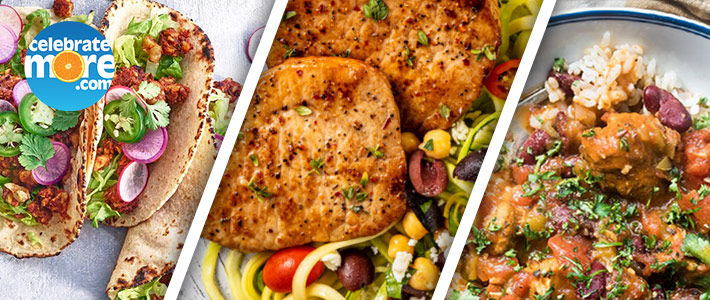
March Meal Madness – Protein Edition

 Happy March! It’s an exciting time of year because we’re FINALLY turning the corner towards spring. While we find leaving winter behind us the most exciting part of March, many believe that March Madness is the highlight of the month. But, as Registered Dietitians, we must share that the true highlight of March is that we celebrate National Nutrition Month! So, in honor of all things nutritious, let’s have our own March Madness… March Meal Madness – Protein Edition! We’re talking smart protein swaps that will make your meal a slam dunk!
Happy March! It’s an exciting time of year because we’re FINALLY turning the corner towards spring. While we find leaving winter behind us the most exciting part of March, many believe that March Madness is the highlight of the month. But, as Registered Dietitians, we must share that the true highlight of March is that we celebrate National Nutrition Month! So, in honor of all things nutritious, let’s have our own March Madness… March Meal Madness – Protein Edition! We’re talking smart protein swaps that will make your meal a slam dunk!
Pork Chop vs. Ribeye Steak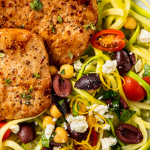
Skinless Chicken Breast vs. Rotisserie Chicken
Walnut Chorizo vs. Chorizo Sausage
Fresh Chicken Tenders vs. Fresh Chicken Wings
No one’s backing down in this game of chicken! Chicken tenders take the lead, making a fast break followed by a slam dunk to score. The versatility and low fat content of the chicken tenders makes them a force to be reckoned with. Soak them in your favorite wing sauce and use them anywhere you might want a zesty chicken wing flavor – I’m talking to you, buffalo chicken wrap!
Pork Loin vs. Ground Beef
Ground beef is a fan favorite in the chili game, but the underdog pork loin pulls ahead to make a HUGE comeback in this one! Just 3 ounces of pork loin contains 24g of protein, giving it the necessary advantage to maintain momentum and win the matchup. Try it for yourself with Instant Pot Pork Chili and Rice for a satisfying and delicious meal!
—
Each of these proteins show up ready to compete, but some shoot more baskets and others shoot more airballs. When it comes to nutrition, the lean and low sodium cuts of meat are a slam dunk! Which of these swaps will you try?
Happy Eating!
Jess, Registered Dietitian
MPPD, RDN, LD
Emily, Registered Dietitian
MFCS, RD, LD, FAND
Give Your Heart Health A Boost 5 Ways
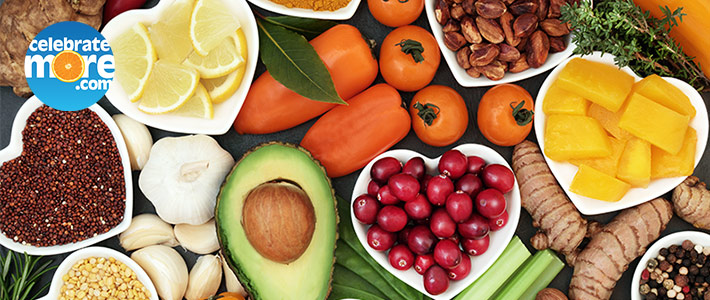
Give Your Heart Health A Boost 5 Ways

When I think of February, I think of Valentine’s Day. But there’s more to February than Valentine’s Day – we also bring attention to heart health for American Heart Month! It’s an important cause to dial into because heart disease is the leading cause of death among Americans¹. We can each do our part to change that statistic with small diet and lifestyle changes that will lead to a happy, healthy heart. Here are 5 ways to give your heart health a boost!
1. Include “healthy fats” in your diet
 Fats are an important part of a balanced diet, but not all fats are created equal. The term “healthy fats” refers to the mono- and polyunsaturated fats that should make up the majority of your recommended 20-35% of total daily calories from fat. Healthy fats make you feel fuller for longer, provide vitamins and minerals, and improve your blood cholesterol when used in place of saturated fats.
Fats are an important part of a balanced diet, but not all fats are created equal. The term “healthy fats” refers to the mono- and polyunsaturated fats that should make up the majority of your recommended 20-35% of total daily calories from fat. Healthy fats make you feel fuller for longer, provide vitamins and minerals, and improve your blood cholesterol when used in place of saturated fats.- Fatty fish like salmon, trout, and tuna are rich in Omega-3s (a polyunsaturated fat that promotes heart health)
- Oils – use these in place of solid fats, like butter
- Nuts – choose unsalted
- Avocados
2. Eat more fiber
- Eat the rainbow of fruits and vegetables! They’re naturally loaded with fiber and the variety of colors means you’re eating a variety of additional nutrients.
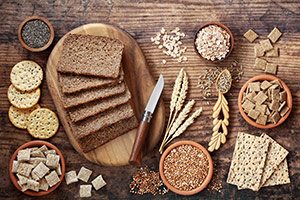 Make the swap to whole grains, at least 50% of the grains you eat should be whole grains.
Make the swap to whole grains, at least 50% of the grains you eat should be whole grains.
- RD Tip: You can quickly tell if an item is whole grain if it lists whole grains as the first ingredient on the nutrition label.
- Try one of my favorite fiber sources – beans!
3. Get active
- Take necessary phone calls or meetings while walking – this can be outside or around the house. Either way, stand up and get moving!
- Evaluate your daily routine. Where can you adjust for a 10-minute walk?
- Wake up 20 minutes earlier to start your day with a peaceful yoga session!
4. Reduce sodium in your food choices
When you eat large amounts of sodium your heart works harder to do its job, resulting in high blood pressure. Cutting table salt out of your diet is beneficial for reducing sodium intake, but most Americans eat large amounts of salt in the form of processed foods. These foods include chips, sauces, frozen meals, canned foods, and more! Look for “Low sodium” on the nutrition label but be aware that the words “reduced sodium” or “less sodium” do not identify the product as a low sodium food. Those terms indicate that the food item simply contains less sodium than the original.
![]()
RD Tip: Look for the Dietitian’s Choice shelf tag while you’re shopping to feel confident that you’re selecting a lower sodium option.
5. Sleep!
This is a factor that the American Heary Association recently added to the list, and I’m very excited about it! We often overlook sleep, as it’s the first thing to fall away when things get overwhelmingly busy. Consistently not getting enough sleep is associated with many poor health outcomes including inflammation and stress. Sleeping the recommended 7-9 hours is key for maintaining your mood and energy levels. A positive mood and high energy levels will surely help you tackle the above intentions.
—
Give your heart some love this month by focusing in on one of these suggestions. Your heart will thank you! Do you have a question about food and heart health? Our Registered Dietitian Team is happy to answer – submit a question below!
Happy Eating!
Jess, Registered Dietitian
MPPD, RDN, LD
Buttermilk Green Goddess Dressing
IBS Awareness Month
 April focuses on Irritable Bowel Syndrome (IBS) Awareness Month. While digestive issues aren’t the most glamourous subject to talk about, they are important to discuss! There are many digestive issues, however, April draws attention to IBS, a disorder where abdominal pain is associated with several different symptoms such as intermittent diarrhea, constipation, or even both. Symptoms are often unpredictable and can be triggered by stress. While the exact cause of IBS isn’t known and there is no cure, there different ways to improve symptoms. Continue reading
April focuses on Irritable Bowel Syndrome (IBS) Awareness Month. While digestive issues aren’t the most glamourous subject to talk about, they are important to discuss! There are many digestive issues, however, April draws attention to IBS, a disorder where abdominal pain is associated with several different symptoms such as intermittent diarrhea, constipation, or even both. Symptoms are often unpredictable and can be triggered by stress. While the exact cause of IBS isn’t known and there is no cure, there different ways to improve symptoms. Continue reading
Bone Health
 March was National Nutrition Month and our Supermarket Dietitians provided lots of wonderful resources on the Dietitian’s Corner section on our website as well as posted some fantastic content on Facebook and other social media platforms. Even though we are officially into April, I thought I would spend a little time talking about one of the conditions that can arise due to poor nutrition, Osteoporosis or bone density loss.
March was National Nutrition Month and our Supermarket Dietitians provided lots of wonderful resources on the Dietitian’s Corner section on our website as well as posted some fantastic content on Facebook and other social media platforms. Even though we are officially into April, I thought I would spend a little time talking about one of the conditions that can arise due to poor nutrition, Osteoporosis or bone density loss.
National Nutrition Month!
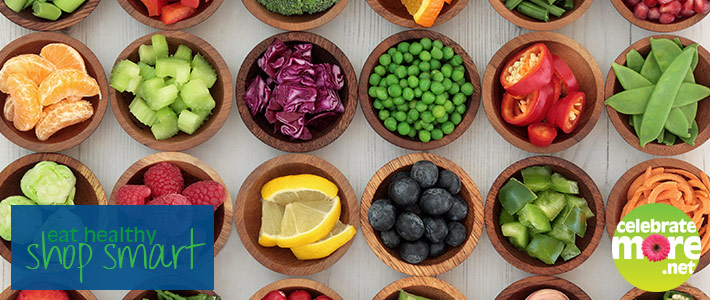
It’s March which means it’s almost Spring, but more importantly it means it’s National Nutrition Month! We may be bias, but March is by far our favorite month at the grocery store. Not only is it a month to celebrate food, it’s also a time to celebrate nourishing our bodies.
Every year, the Academy of Nutrition and Dietetics’ March campaign emphasizes the importance of making informed food choices and building a healthy relationship with food. In 2018, the theme is “Go Further with Food.” What does this mean exactly? Well, it means a few different things. First, we can have more energy and do more when we fuel are bodies with nourishing foods. Second, when we are more aware of what food we have on hand and how much we buy at the grocery store we can reduce food loss and waste which also means saving money! That being said, let’s talk about my top 5 tips for “Going Further with Food”:
- Include a healthful variety of food. Remember, each food group contains different types of nutrients and in different amounts. It’s importance we get a good balance of these nutrients daily, but don’t be afraid to mix things up! Have a banana with oatmeal for breakfast every morning? Mix things up and add berries!
- Consider what you have on hand. Before going to your local Coborn’s, Cash Wise Or Marketplace Foods, make a mental or physical note of what your already have in your pantry, refrigerator, and freezer. When we are aware of EVERYTHING we have on hand before going to the grocery store we often are able to use up those items that may be otherwise thrown out.
- Buy only the amount of food that can be eaten or frozen within 4 days. Say what? Yes, you read that right. This is because items that are fresh or prepared should be eaten or frozen within a few days after preparing. Unfortunately, that hotdish sitting in the fridge you made last week needs to be tossed. To make sure that doesn’t happen again, be aware of how much you will eat within those days and freeze the rest. Hello, easy heat and eat meal!
- Be mindful of your portion sizes. If we paid attention to our serving sizes and hunger cues I can guarantee we would not only feel better, we would also be reducing food waste as we would be more in-tune with how much we eat.
- Move. Although this isn’t a food tip, it’s still a VERY important part of overall health. Find activities you enjoy (even in the winter!) and be physically active most days of the week.
We’d love to hear how you will be celebrating National Nutrition Month this year! Tune in to our Healthy Tip Tuesdays on Facebook Live each week and join us for lots of great topics on nutrition and even some great giveaways!
Healthy and Happy Eating,
Emily, RD, LD




